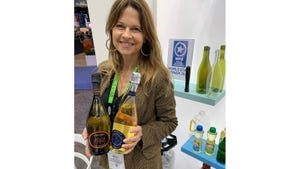Technology Notebook: Increasing pressure for improved mold-temperature control
May 7, 2005
|
By Wes Moffitt, water products manager at Wittmann Inc.
Most processors selecting a temperature control unit (TCU) for mold cooling size the unit based on previous experience rather than an actual calculation for the specific application. The TCU selection remains one of the least thought out purchases in auxiliary equipment, even though the calculation is quite simple and the benefits of proper sizing directly impact mold cooling and cycle time. The three major criteria necessary for sizing a TCU to the application are: heating, cooling, and pump sizing requirements. Too often, flow rate is mistakenly specified instead of pressure, resulting in insufficient cooling and poor temperature control.Having calculated the necessary capacity for preheating (see heating capacity sidebar), it is necessary to determine how much heat the molten plastic adds to the injection mold. We can then determine the total cooling requirements to maintain the 150ºF operating point. To calculate the cooling capacity, the material type and throughput must be known. This is quantified in the form of how many BTU?s are to be removed.
The water flow rate is dependent upon the water line size to and from the mold and the internal cooling passages. If we consider the 1?4-inch line in Chart 1 above to be representative of the typical mold cooling channel sizing, we see that it?s nearly impossible to achieve 6 gal/min (see cooling capacity sidebar), so we must look at increasing the cooling passages to a 3?8-inch line which is much more practical. In order to pump 6 gal/min through a 3?8-inch line, we see from the chart that approx. 50 psi is needed.
A common specification for a TCU would be 9 kW, 3?4 hp, rated for 30 gal/min. The only valid specification here is the 9-kW heater. As we see from the chart, achieving 30 gal/min is not possible through a 3?8-inch line. What is actually required to achieve 6 gal/min is 50 psi or more. Increasing the horsepower is not the best solution as even larger pumps such as a 1-hp centrifugal pump can not achieve 50 psi.
|
The author?s experience shows that turbine pumps offer higher and more constant pressure with less horsepower than centrifugal pumps. For example, a 1-hp turbine pump meets the requirement very well and offers other advantages such as reverse operation for negative pressure. Clearly, specifying a TCU based only on the horsepower and gal/min rating of the pump is meaningless without also specifying the pressure rating and understanding the amount of water that can physically be pumped through a cooling line.
Specifying the type of TCU based on pressure is much more important to achieving proper cooling than is specifying a TCU based on horsepower and flow. Regenerative turbine pumps produce much higher pressures than centrifugal pumps of equivalent horsepower. Increased pressure results in higher flow rates and more turbulent flow through restrictive passages and thus, TCU?s with higher pressure turbine pumps provide increased cooling with less horsepower.
Contact information |
You May Also Like





